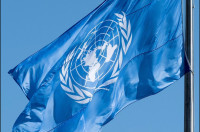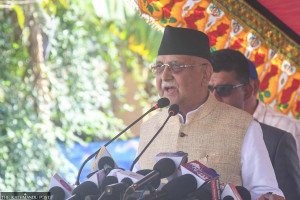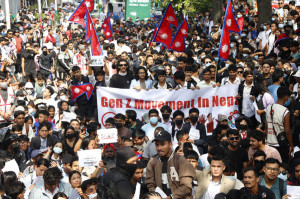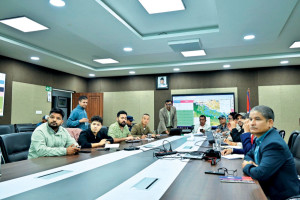Opinion
Federal tourism
Future provinces which blend resources, connectivity and skills will attract more visitors
Kashi R Bhandari
While the entire country has been grappling with republican woes since its inception, tourism has been hit the hardest. The proposed demarcation of future provinces has resulted in scores of violent demonstrations which have adversely affected the tourism industry. This is because the news about a place determines people’s travel plans. And tourism is more about experiences and less about consumption.
The politicians are largely to be blamed for this state of affairs. They have failed to assure the people and have instead fuelled social, political, economical, and psychological insecurity among them. This in turn has resulted in a perennial state of turmoil which is the biggest deterrent to growth in tourism. Things were not as bad even during the height of the insurgency. The friendly behaviour of the rebels prevented tourist numbers from plummeting during the conflict years, even though they used to extort donations from visitors.
Vital catalyst
The current discourse on federalism, however, is inevitably linked with tourism as identity and resources have been identified as the two major bases for state restructuring. Most of our resources are utterly underutilised, and it is unevenly distributed across the country. While land, water, forests, herbs, mines and similar tangible resources are relatively easier to classify and allocate, the economic significance of their by-products and activities based on them need a more meticulous analysis so that no state is left impoverished. However, economic issues are seldom accorded priority. So, it is crucial to initiate a public discourse at this juncture to ensure that the lives of the inhabitants in the inchoate states will not worsen because of state restructuring. Tourism, per se, cannot be a panacea to wipe out the entire gamut of economic woes at one go. However, it could become a catalyst to get the ball rolling as it is inevitably inter-connected with other vital sectors of the economy.
Required initiatives
Tourism could be a saviour as it can promptly give returns on the investment and perhaps placate an angry crowd currently protesting against the seven-province model proposed by the leaders. Other resources take a much longer time to yield the desired returns or require unreasonably huge investments. It is equally necessary to formulate clear provisions so that the adjacent states share the resources, benefits and create a synergy instead of blaming each other for being presumptuous. While a significant number of iconic heritages transcend state borders and are the essence of national tourism, resource-rich recalcitrant states may want to devise their own mechanisms of revenue collection and refuse to share the benefits. Therefore, it will be the responsibility of the federal government to ensure that the pie of tourism is shared equitably among the deserving states. Those states which do not possess adequate resources for tourism will need to meticulously work out an alternative economic solution.
Another pertinent issue for tourism development is the quality of connectivity of the states with the source markets and between the destinations within a state. In addition, proximity to the markets is also vital for tourism to prosper. In the immediate future, states that share a border with China or India apparently have a higher propensity to receive more tourists. Destinations that enjoy a well-connected transportation network offer smooth movement for visitors—enriching their experience and increasing the chances of repeat visits. While intra-state infrastructure is the responsibility of the state governments, inter-state infrastructure is the responsibility of the federal government.
Restructuring the country and running the subsequent administrative apparatus will cost Nepal a colossal amount of funds. As a consequence, the country could be put in a more financially precarious position which could increase our dependency on foreign aid. By means of tourism, the states may then move away from foreign aid to foreign investment by inviting investors to invest in a range of infrastructure and tourism facilities.
Learn from India
Using well-known brands for promoting tourism destinations are strongly recommended for tourism development in federal Nepal. Federal provinces should brand themselves as tourism destinations—the state of Kerala in neighbouring India is a successful example of this. Over the years, the state, which has been promoted as ‘God’s own country’, has created its own distinct brand identity underscoring Ayurveda and attracts millions of visitors. Additionally, as tourism is a service industry, it needs a huge pool of skilled and qualified human resources. Since a majority of tourism activities are confined to a few regions, new provinces may face a challenge in delivering quality services to their visitors.
As the constitution-writing process is progressing forward, Nepalis are optimistic about their future in federal Nepal. For federalism to be successful in Nepal, however, the future states should be run in a businesslike manner by giving up archaic ideologies. Those states which accord priority to tourism and blend resources, connectivity and skills into a meaningful whole will not only attract more visitors, but will have a higher chance of prospering and sustaining themselves as federal provinces.
Baral and Bhandari are both associated with the tourism industry




 17.12°C Kathmandu
17.12°C Kathmandu










